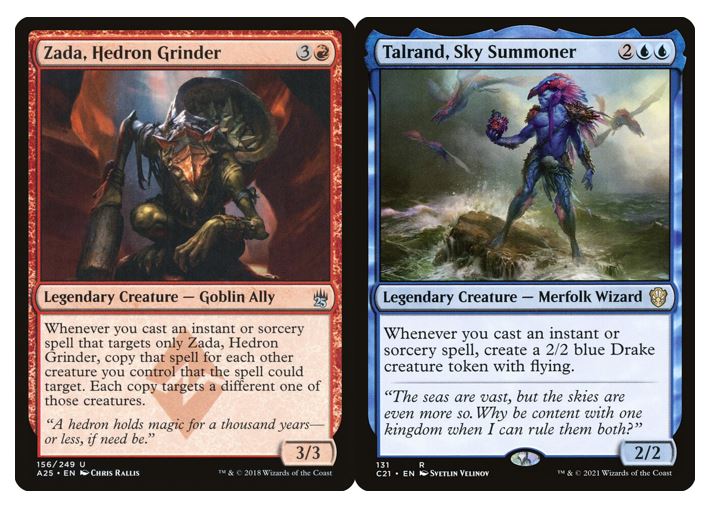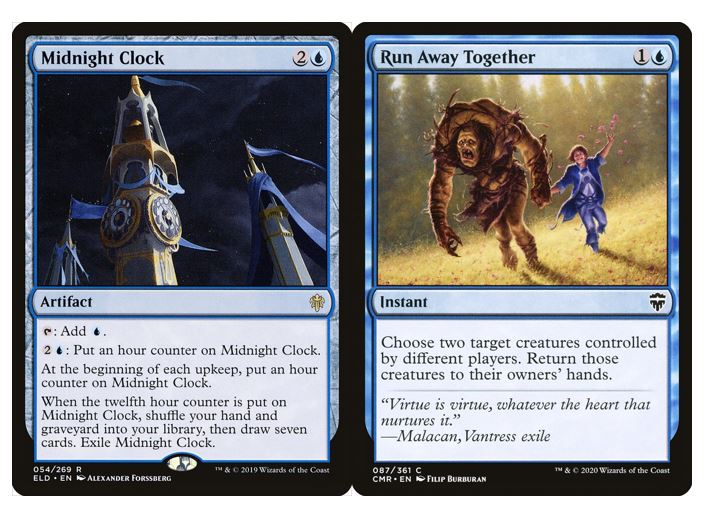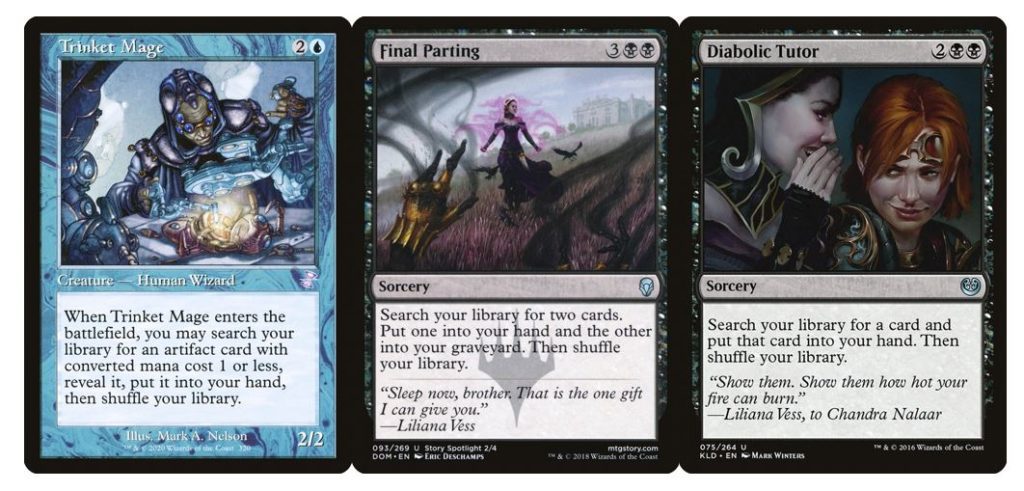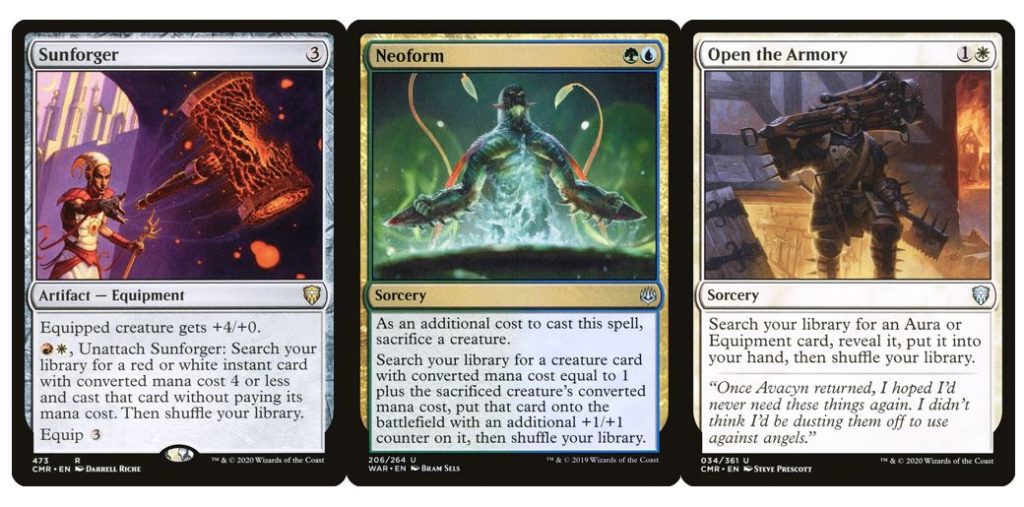For a lot of us, the best part of Commander is the process. Brainstorming ideas until you have a complex web of synergies (and 20 cuts to make) is one of the most enticing aspects of the format.
Brewing is how many players show off their creativity, and there’s no greater compliment than telling someone their deck is amazing. Not everyone has access to every card for their brews, however, and some of us have a limit to what we can spend on Magic. Some may see this as a drawback, but this limit can be more useful than you may think. I’m a firm believer in the adage “restriction breeds creativity”; people’s ingenuity and urge to overcome obstacles really show when limits are put in place, and a price restriction is perfect for getting those creative juices flowing!
If you’re new to brewing, or are not used to brewing on a budget, it can feel like there’s no decent starting point. For reference, there are nearly 20,000 cards that cost less than $5; considering a reasonable number of Commander staples aren’t in that price range, it can feel like a daunting task to build a decent deck from scratch.
My aim today is to help you get started in budget brewing, from choosing your commander to making the final few cuts. Even if you’re already a prolific brewer, you might yet pick up a new thing or two!
Tools of the Trade
When it comes to brewing, everyone has their own process, and it can vary wildly from person to person. The best way to figure out your own style is to try a few methods out and see what fits best. I’ll list some of my favorite sites and resources here to help you get started. This isn’t an exhaustive list, so if one of these doesn’t work for you, there are plenty of other resources available!
Scryfall
There is no substitute. Scryfall is without a doubt the Magic card search engine. It’s easy to use, it’s constantly updated, and it has the most powerful advanced search I’ve ever found for Magic. My deck building time would increase tenfold without this incredible site. It can take a bit of time to learn how to get the most out of the search functions, but your efforts will be rewarded greatly.
EDHREC
EDHREC is a Commander aggregator site, displaying incredible amounts of data from decklists across the web. They collect deck data from Archidekt, MTGGoldfish, Aetherhub, Commander Spellbook, Moxfield, Scryfall and Deckstats, and compile it all into digestible recommendations for each legendary creature, theme, or color pairing. This site is ideal for getting inspiration for a new deck, performing early research on a commander, or even checking to see if you missed anything special in any given deck. They even have an option to generate an “average deck” under each commander, which gives you an collated decklist based on the decks they have access to. These decks are just intended as starting points, but they can really help to kickstart your creative process!
Archidekt & Moxfield
These are both deck building websites, designed to make the whole process as open and intuitive as possible. They’re both quite visual in their layouts, letting you sort your cards into different piles as you would on your kitchen table. They also offer stats on your decks, like your curve, card type breakdown, and average mana value. One of the most useful features for brewing is the playtest function: you can goldfish your decks on either site to get a feel for them before you commit to anything. Now, you can be sure the cards you’re buying are ones you’ll be happy with!
YouTube
You’d be surprised how great YouTube is as a deck building resource. You can find deck tech videos of your new commander for inspiration, watch gameplay videos to see how they tend to perform, or even find a primer with important tips and interactions to look out for. It might seem obvious, but YouTube really is the best place to experience decks as close to real time as possible, and it’s invaluable for builders on any budget.
Tips & Tricks
There’s no “right” way to brew, nor is there a “correct” way to teach it. The best thing to do is get right to it and see what feels right for you. I’ve compiled a list of tips and tricks that I’ve built up over my years of brewing that could be of use to you. Some of these tips might suit your style more than others, and some could completely change how you approach the process. If you even take away one new tidbit of information, or improve any aspect of your brewing, then I’ll consider this a huge success!
Do Some Research First
Before you dive deep into deck building, be sure to do some cursory research into the commander you’re considering. Check their EDHREC page for the cards most frequently used with them; these are as close to “auto-includes” as you usually get in commander. While they’re not absolutely necessary, these cards will usually contribute massively to the game plan. If these cards are affordable, then you’re off to a great start!
Some Decks Just Hit Different
Most commanders can be built on a budget, but the same can’t always be said for all strategies. As some of the cornerstones of a given strategy may be outside your price range, they could end up lower in power in some way; depending on what you’re brewing, it may be slower, less flexible, more inconsistent, or less resilient than the full budget equivalent. This isn’t necessarily a bad thing — lower power doesn’t mean lower fun — but it’s worth keeping in mind.
While some strategies may not be as viable on a budget, there can often be workarounds for this. For example, if you’re looking to make a Stax deck with Lavinia, Azorius Renegade, you might find Winter Orb, Mystic Remora, and Linvala, Keeper of Silence are outside your budget. But you could easily pivot into a hatebears deck that still has a Knowledge Pool or Omen Machine lock. This would provide a similar experience, but at a fraction of the price!
Not All Commanders Are Created Equal
As I’ve shown several times in my Budget Commander Series, most commanders can be made budget-friendly. However, some are better suited to the task than others. Zada, Hedron Grinder and Talrand, Sky Summoner are great examples of extremely budget-friendly commanders; you could build a reasonable deck around either of them for less than $30, as they both run a high number of cheap instants and sorceries. They can also be built up to higher power levels than most commanders when under a cost limit, giving you much more bang for your buck.

Look For Alternatives
Generally speaking, a lot of Commander staples are relatively affordable, but over the course of building a whole deck, it can really add up. Thankfully, nearly every card has a more affordable equivalent, so it’s easy to shave a lot off the final bill. Instead of Swiftfoot Boots, try Mirror Shield; it’s not quite the same, but if you need to cut down costs overall while keeping close to the same effect, it’s a great substitute. Can’t afford Stoneforge Mystic? Stonehewer Giant is a great replacement! Making these substitutions are a great way to reduce costs without deviating from your intended game plan. You can find these more affordable cards by filtering your commander’s EDHREC page by budget, selecting the “Cheap” option. You can also search Scryfall for cards with similar text to the ones you’re looking to replace; not only can you sort by price, but you can even set cost limits.
If you aren’t yet up to speed with the more affordable staples or replacements, or if you’re finding cost restrictions to be limiting your ability to build what you want, there is a workaround that may help. You can try brewing the deck at full budget, then run back through it and replace the more expensive cards with their budget alternatives. This won’t work for everything — there isn’t a 1-for-1 cheaper version of every card — but it can be a way to get some tricky decklists completed.
Make A Favorites/Personal Staples List
Everyone has pet cards — spells that always bring a smile to your face when you draw them and cause opponents to use Spelltable’s search function. The great thing about many pet cards is they don’t tend to see a lot of play, so they’re often very affordable.
Use this to your advantage: make a list of your pet cards or ones you’ve seen other players use, and keep it handy when you’re brewing. Not only will having a reference like this really help to elevate your deck building, but players love to see someone playing with their pet card!

For some examples to get you started, I love Midnight Clock and Run Away Together. These two cards end up in almost every blue deck I build. A mana rock with a personal Timetwister attached is absurd, and a double Unsummon not only powerful, but can be used as political leverage.
Keep A Brewer’s Notebook
Taking and keeping brewing notes is one aspect that’s not practiced enough by most deck builders, and it’s one of the best. I keep a notebook on my desk that’s purely for brewing, and it’s been a godsend. I write down cards I think are sweet, even if I don’t have a home for them yet. I also write down strange build ideas for commanders, and cards I think might become more powerful if they get the right support in the future. You could put your own staples list in the back of it, giving you a one-stop shop for all your ideas.
Use Tutor Packages
Tutors often get a bad rap by some players for increasing consistency. They can serve budget decks extremely well, however, and not just to find combo pieces.
Let’s take my favorite tutor, Trinket Mage, as an example. You can use it to fit a small toolbox package into your deck at very little opportunity cost. You can tutor for artifact lands or Sol Ring for mana, Tormod’s Crypt for graveyard hate, removal in the form of Aether Spellbomb, or even card draw with Brainstone. These cards are all perfectly fine by themselves, but being able to tutor for them gives a new layer of depth to your build.

If you spend a chunk of your budget on a couple of powerful cards, you can add some tutors to help find them more often. My Syr Konrad, the Grim deck has Crypt Ghast and Mindcrank to help the deck perform; they’re quite pricey as far as budget goes, so I added Final Parting and Diabolic Tutor to find them regularly. If they’re not needed, I can use my tutors to grab whatever I need at the time instead.
A small increase in consistency is a huge boon to many decks, and should be considered for most budget builds. There are plenty of affordable tutors that can perform admirably in the right deck. Some of them, like Sunforger, Neoform, and Open the Armory, are even used in high budget decks due to their flexibility and potency; you’d be remiss to leave them off the table when brewing!

Buy Cheap Singles In New Sets
A lot of staples start life off as affordable pickups. Soon after release, Smothering Tithe was $2; it’s not a budget card any more, but it is for those that bought some copies while it was low! I’m no financier, but these kinds of “speculation” purchases are very low-risk: as they don’t cost much to begin with, so they can’t drop much in value, but they can absolutely go up! The worst case scenario is that Xorn you bought drops by a few cents, and you still have a cool card to play with; the best case scenario you get in at the ground level on a new expensive staple!
Practice Makes Perfect
The best way to get better at brewing on a budget is to brew on a budget. It seems obvious, but practice is what makes you a better brewer. Asking others for feedback is also great; if you’re stuck, asking another brewer for advice on where to go with a build can make all the difference. The more you work on it, the better you get — every deck you build will make the next one better and faster. Eventually, you’ll reach a point where you’ll either know a budget equivalent to any card or can find one in seconds.
I hope I’ve helped provide some inspiration for your future brews. I’m even feeling a renewed sense of inspiration myself! Time to put Scryfall through its paces as I work on that 5-Color Codie & Jegantha Sunforger deck!

Scott is an Irish content creator and the Head of Budget Magic for the Izzet League. He focuses on affordable decks in Pioneer, Modern, and Pauper, particularly ones that stray from the mainstream. When he’s not writing about his favorite decks, he can be found talking incessantly about them on Twitter and on The Budget Magic Cast.

